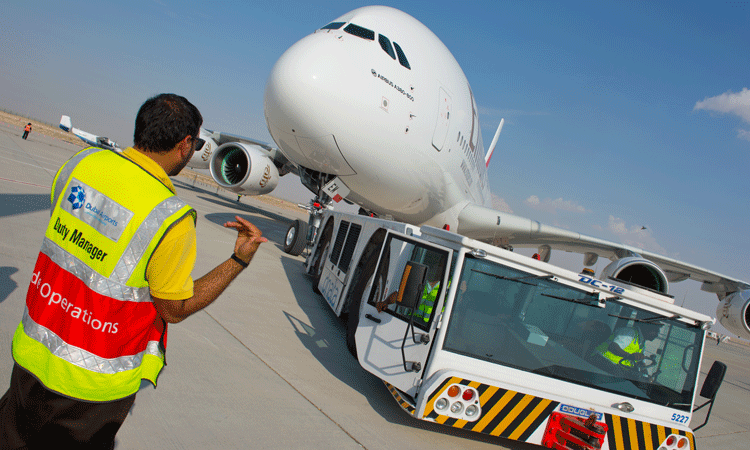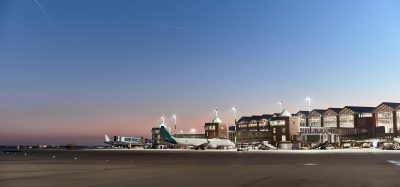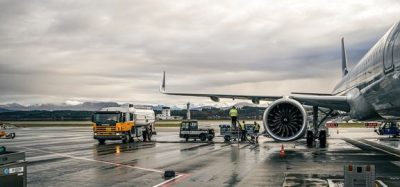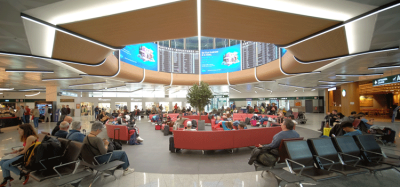The Airbus A380: Inspiring ground support
Posted: 18 May 2014 | Peter Esteie, Sebastien Lavina | No comments yet
With the deployment of the A380 in more and more airports, ground handling logistics are paramount. Peter Esteie and Sebastien Lavina, from Airbus Airport Operations, provide an update of new developments


Much attention has been paid to involve all airport stakeholders early in the development of the A380 to make sure airports all over the world can handle the aircraft1. This article will explain what has happened with the A380 airport network since 2012, touch on new developments in ground handling and focus on the A380 Airport Assessment process.
The airport network
Since 2012, the Airbus fleet has grown by 55 to 128 aircraft, and three new operators (Malaysia Airlines, Thai Airways and British Airways) have started services. As a result, accumulated flying hours and flights have more than doubled to 1.3 million and 160,000 respectively. A380s now span the globe, with more than 170 flights operated per day, and over two million passengers enjoying the experience every month.
From an airport’s perspective, a look at where the more recent deliveries have been deployed provides an indication of the concentrated nature of large aircraft operations in general. In April 2012 the A380 served 25 airports and three more were expecting services imminently. Today, the number has risen to 36 destinations. The eight new destinations / home-bases of Atlanta, Barcelona, Kuala Lumpur, London (Gatwick), Moscow (Domodedovo), Mauritius, Osaka (Kansai), Rome (Fiumicino) however only represent 15 per cent of the increase in weekly departures. The other 85 per cent have come from increases in frequencies to those airports that were already served.
Join us live: Shaping the Next Generation of Hold Baggage and Air Cargo Screening
Join us live for an insightful webinar on 11th December at 14:00 GMT, in collaboration with Smiths Detection, as we explore the strategic balance of operational efficiency, regulatory compliance, and sustainability in high-volume security environments.
This session offers a focused look into future-proofing your security strategy.
Key learning points
- Cost Reduction: Strategies to minimize bag travel time while simultaneously reducing operational costs.
- Regulatory Roadmap: Insights into the next wave of regulatory changes and their impact on future investment decisions.
- Sustainable Systems: Practical approaches to building sustainability into security systems and lowering the total cost of ownership (TCO).
- Scalable Solutions: Real-world examples of scalable systems supporting current airport growth and preparing for tomorrow.
Register now for expert insights, case studies, and actionable strategies on operational efficiency!
Apart from Dubai (+178 weekly departures), some very significant increases have been seen at destinations like Shanghai Pudong (+18 weekly departures) and Los Angeles (+39 weekly departures). This concentration is set to continue as new operators will, in large part, continue to serve capacity constrained airports that are already part of the A380 network. We will see four new operators (Asiana Airlines, Qatar Airways, Skymark Airlines and Etihad Airways) deploy their aircraft in 2014, considerably increasing the operational footprint of the aircraft. All of the initial routes announced by these airlines are to existing destinations.
The reason behind this very high level of concentration is simple; these airports are not just hubs but essential gateways of massive centres of commerce, industry and population that literally billions of people want to fly between. Today, traffic between just 42 so-called aviation ‘mega-cities’ represents over 50 per cent of all long-haul traffic (see Figures 1a and 1b). These are iconic centres like London, Paris, New York, Dubai, and Singapore. It is not surprising that the A380 is already deployed between 70 per cent of them, with the remainder – including Abu Dhabi, Delhi, Doha, Mumbai, and São Paulo – to be served within a year.


Figure 1a: Traffic between 42 aviation mega-cities in 2012


Figure 1b: Projected traffic between 89 anticipated mega-cities by 2032
The upshot of this deployment profile is that there will be an increasing demand for A380 stand positions at existing A380 destination airports. The use of Multi Aircraft Ramp Systems (MARS) is a particularly effective solution to achieve the desired flexibility in accommodating multiple aircraft types. The pay-back is significant with the A380 offering stand productivity (number of passengers processed per turnaround) that is up to 60 per cent higher than existing large wide-body aircraft. This is due to the efforts taken in the design of the cabin as well as the ground-servicing concept that targeted a turnaround time of 90 minutes, similar to other large wide-body aircraft, despite the A380 having up to 70 per cent more capacity. The fact that around 30 per cent of all A380 out-station turnaroun
ds are between 80 and 110 minutes is testament to the fact that the initial design target has been met.
Looking to the future, the demand for very large aircraft is set to continue. This is reflected in the increasing order backlog for the A380, which now stands at 196 aircraft. In the last six months alone 70 orders were placed for the A380, 50 additional aircraft for Emirates, and a new order for 20 aircraft
by the leasing company Amedeo. This demand is driven predominantly by increasing urbanisation and the rapid growth of emerging markets, which will see the number of aviation mega-cities grow to 89 by 2032. Air traffic as a whole will more than double in the same time period. As these cities exert more dominance on the long-haul market, the concentration of long-haul traffic between them will correspondingly increase to 75 per cent. It is these lucrative routes, with their already dense traffic and congested airports that are and will continue to be the primary home for the A380.
Ground handling
The use of standard ground support equipment (GSE) and servicing procedures was taken into account very early in the design of the A380. Today, there is a large choice of A380 compatible GSE and this list is still growing. In 2013 we added the GHH AM 500XL to the list of A380 qualified Towbar Less Towing Vehicle (TLTV). There are now six A380 qualified TLTVs from five different manufacturers (Douglas-Kalmar, GHH, JBT, Goldhofer and TLD).
Another GSE development, not restricted to A380, but with great potential for this aircraft, are ground-based Air Conditioning Units delivering pre-conditioned air at temperatures lower than +1°C. The IATA Aircraft Handling Manual (AHM) 974 ‘Functional Specification for Aircraft Air Conditioning Units (ACU)’ defines a temperature range of +1°C (34°F) to +5°C (40°F). In reality however, many ACUs are delivering air to the aircraft at 6 to 8°C (43 to 48°F). The performance of ACUs is therefore not comparable with what can be reached with the aircraft Auxiliary Power Unit (APU). However, for environmental reasons, APU usage is restricted in many airports and we can only expect this to be a growing tendency. Therefore, to maintain the high level of cabin comfort that passengers expect, solutions had to be found to increase the performance of ACUs.
First of all, the AHM 974 minimum temperature limit applies to the air temperature at the aircraft connector and not at the exit of the ACU itself. ACU output temperature should be set such to reach an air temperature at the aircraft inlet as close as possible to +1°C (34°F).
More importantly, a new AHM 997; ‘Functional Specification for Sub-Freezing Aircraft Air Conditioning Unit’ was introduced in 2012. Sub-freezing ACUs are units which can deliver air at temperatures below +1°C at the aircraft interface. The use of sub-freezing equipment is subject to specific conditions (air humidity, pressure, etc.) which are explained in the relevant Aircraft Maintenance Manual.
As an example, when using sub-freezing ACU on A380, the minimum air temperature at the aircraft connector can be as low as -10°C (14°F), allowing for a very quick cabin pull down and a high cabin comfort level even in hot conditions.
Another GSE development is Taxibot. Taxibot equipment can be used for operational towing (moving the aircraft to the runway with engines off), allowing the airport to reduce emissions. The wide-body (A380, A330/A340) compatible Taxibot is expected to be certified late-2015.
Airport compatibility
Well before the launch of the A380, Airbus recognised that besides the requirement to use existing ground handling equipment, the A380 also needed to fit into today’s airport infrastructure with minimal changes.
Of the 36 A380 destinations served today, only a few are fully compliant with the design recommendations of the ICAO Annex 14 Code F, which applies to new airport infrastructure. Most have accommodated the aircraft using an operational approach combined with the modification of existing infrastructure. The challenge aerodromes face today is that the guidance for accommodating large aircraft using an operational-based approach are not consolidated.
The PANS (Procedures for Air Navigation Services) Aerodromes manual is intended to fill the operational gap and address many of these procedural challenges for aerodrome operational management. Airbus is involved in the ICAO Aerodromes Panel and subsequent working and study groups, which are aiming to publish the first edition of the PANS Aerodromes Manual by November 2015.
Pending the availability of the PANS Aerodrome Manual, Airbus can ensure the required information is available and made accessible to Airport Authorities, local Civil Aviation Authorities and airlines to ensure airports are ready in due time for A380 commercial operations. Throughout the years, Airbus has gained valuable expertise in assessing airport infrastructure in relation to the A380. While Airbus is committed to assist all stakeholders, it has to be highlighted that the definition and approval of airport adaptations remains, at all times, the sole responsibility of the airport and the local Civil Aviation Authority.
The Airport Operations team within Airbus can detail the generic infrastructure requirements for A380 operations (be it for destination or alternate airports) and examine the current or future situation at airports, in close collaboration with Airport and Civil Aviation Authorities. The objective is to study, explain and suggest potential adaptations recommended to handle the A380.
Typically, the airport assessment and recommended airport adaptations focus on a few major areas, including:
- Regulatory compliance checks: Runway/Taxiway/Taxilanes dimensions and separations, obstacles limitations (OFZ), holding points, etc.
- ILS interference studies to assess the impact of any objects (aircraft buildings, cranes) using E.L.I.S.E.2, an advanced 3D ILS simulation tool, allowing to improve safety while maintaining/increasing airport capacity
- Manoeuvrability: aircraft accessibility to gate or remote position
- Engine topics: ground clearance checks, jet blast, etc.
- Apron: compatibility check of available contact and remote stands
- Pavement loading capability: putting actual airport pavement characteristics in relation with aircraft requirements (depending on actual routes to be flown)
- Ground operations and airport safety: availability and suitability of available equipment available (see above), aircraft rescue and fire-fighting category.
Airbus’ longstanding experience in facilitating cooperation between all airport stakeholders, airport authorities, local CAAs, service providers and airlines, ensures airports have been and will be ready on time for A380 commercial operations. The Airbus Airport Operations team will share this expertise with any airport planning to accommodate A380 operations in the near future.
References
- ‘Continued handling of the A380’, International Airport Review, Volume 16, Issue 3 2012
- Exact Landing Interference Simulation Environment
Biographies
Peter Esteie is Head of Ground Operations & Airport Safety, Airport Operations – EIJG at Airbus. He is a graduate of the Technical University in Delft, Netherlands and has a degree in Aircraft Maintenance Management. He started his career in Airbus Customer Services Engineering, and later moved to the A3XX (later A380) programme taking up a variety of positions covering systems maintenance, cargo and freighter systems and airport operations. With the A380 programme nearing the end of the development phase, Peter left to take up a position in Airbus Engineering Airport Operations, heading the department for Ground Operations of all Airbus aircraft.
Sebastien Lavina is Manager of Airport Data and Assessment, Airport Operations – EIJA at Airbus. He graduated from ENAC (Ecole Nationale de l’Aviation Civile, based in Toulouse, France) in 1997 and began his career at Airbus in 1998 within the A3XX (later A380) programme, covering airport compatibility aspects until the A380 entry into service. Since 2007, Sebastien has been a member of the Airbus Engineering Airport Operations team, where he is responsible for airport data and airport assessments for all Airbus products, including the A380.
The International Airport Summit is open for registration!
Date: 19 – 20 November 2025
Location: JW Marriott Hotel Berlin
At our flagship event of the year, we will dive into the future of airport operations, with expert-led sessions on passenger experience, innovative smart technologies, baggage handling, airside operations, data, security, and sustainability.
This is where global airport leaders come together to share insights, challenges, and real-world solutions.
Limited complimentary passes are available for eligible professionals – first come, first served!


















